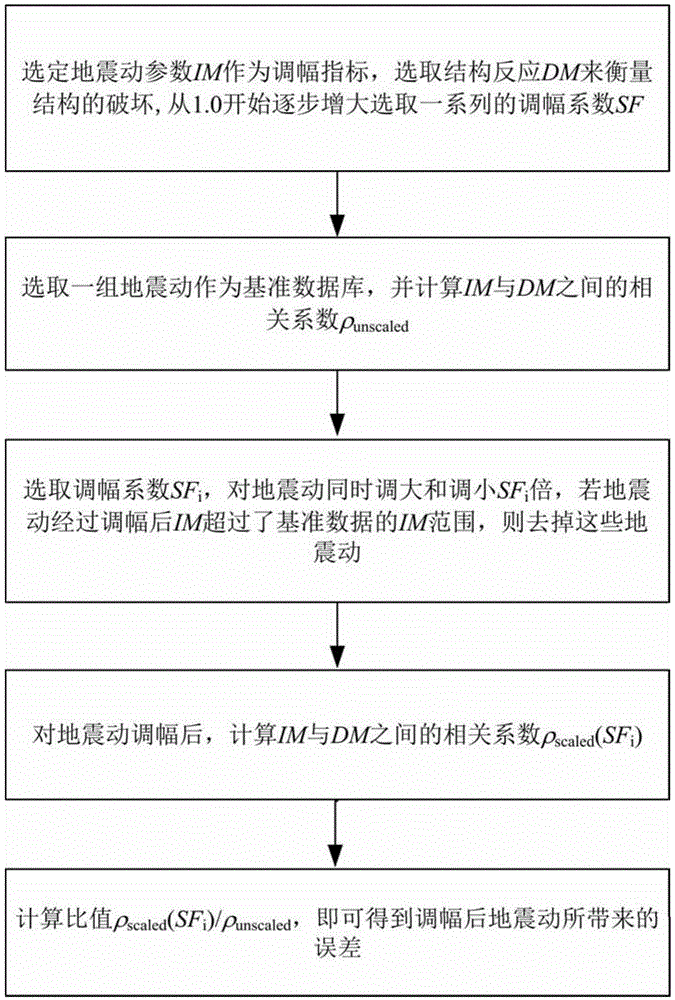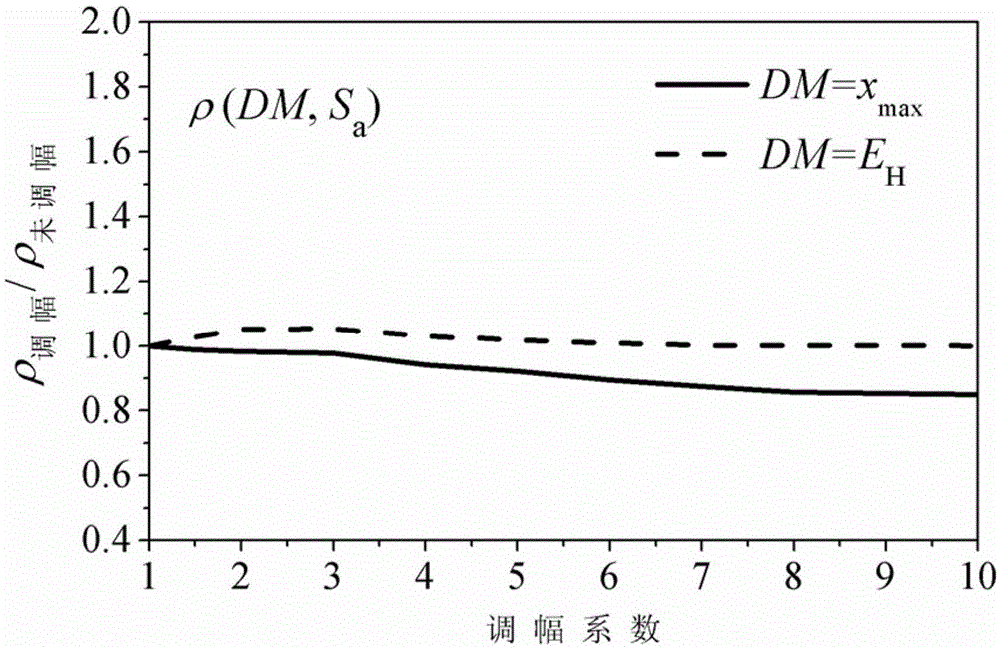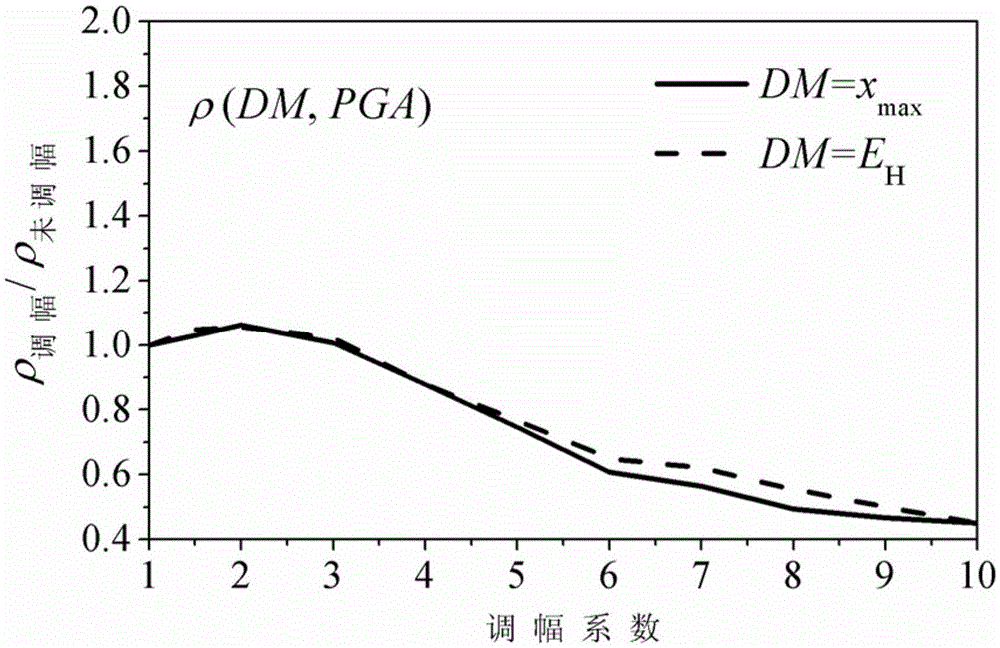Seismic oscillation amplitude modulation index and amplitude modulation coefficient evaluation method
A ground motion and index technology, applied in seismic signal processing and other directions, can solve the problems of large error, no ground motion amplitude modulation index and amplitude modulation coefficient method, etc., and achieve the effect of simple application
- Summary
- Abstract
- Description
- Claims
- Application Information
AI Technical Summary
Problems solved by technology
Method used
Image
Examples
specific Embodiment approach 1
[0022] Specific implementation mode one: combine figure 1 Describe this embodiment, a kind of earthquake amplitude modulation index and amplitude modulation coefficient evaluation method of this embodiment, specifically prepare according to the following steps:
[0023] Step 1. Determine the dynamic characteristics of the inelastic SDOF structure. The dynamic characteristics of the inelastic SDOF structure include period, damping ratio, hysteretic characteristics and strength, and SDOF is a single degree of freedom;
[0024] Step 2. Select 8 ground motion parameters as the amplitude modulation index, which are peak ground acceleration (PGA), peak ground velocity (PGV), peak ground displacement (PGD), Arias intensity (I A ), Park-Ang characteristic strength (I C ), Housner intensity (d rms ), spectral acceleration (S a ) and Housner spectral intensity (S I );
[0025] Step 3. Using the dynamic characteristics of the inelastic SDOF structure determined in step 1 and the 8 a...
specific Embodiment approach 2
[0028] Specific embodiment 2: The difference between this embodiment and specific embodiment 1 is that the non-elastic SDOF structural characteristics are determined in the step 1, and the non-elastic SDOF structural characteristics include period, damping ratio, hysteretic characteristics and strength; the specific process is:
[0029] The period of the inelastic SDOF structure ranges from 0.1 to 6.0s, and the period interval is 0.1s. Assuming that the damping ratio of the inelastic SDOF structure is 5%, the ideal elastoplastic (EPP) model is used to simulate the hysteretic characteristics of the inelastic SDOF structure. The lateral strength of the elastic SDOF structure is measured by the strength reduction coefficient R, the definition of R is shown in formula (1), and the value of R is set to 2, 4, 6;
[0030] The formula for calculating the strength reduction factor R is:
[0031] R = F e ...
specific Embodiment approach 3
[0034] Specific embodiment three: the difference between this embodiment and specific embodiment one or two is that in said step three, the non-elastic SDOF structure dynamic characteristics determined in step one and the eight amplitude modulation indicators selected in step two are adopted, and the ground motion without amplitude modulation is adopted. Record and calculate the correlation coefficient between the structural response and the amplitude modulation index; the specific process is:
[0035] The process of calculating structural response using unmodulated ground motion records is as follows:
[0036] Select 364 ground motion records, and calculate the maximum displacement response value and hysteretic energy consumption response value of the inelastic SDOF structure under the unmodulated ground motion according to the dynamic characteristics of the inelastic SDOF structure determined in step 1:
[0037] m v ·· ...
PUM
 Login to View More
Login to View More Abstract
Description
Claims
Application Information
 Login to View More
Login to View More - R&D
- Intellectual Property
- Life Sciences
- Materials
- Tech Scout
- Unparalleled Data Quality
- Higher Quality Content
- 60% Fewer Hallucinations
Browse by: Latest US Patents, China's latest patents, Technical Efficacy Thesaurus, Application Domain, Technology Topic, Popular Technical Reports.
© 2025 PatSnap. All rights reserved.Legal|Privacy policy|Modern Slavery Act Transparency Statement|Sitemap|About US| Contact US: help@patsnap.com



